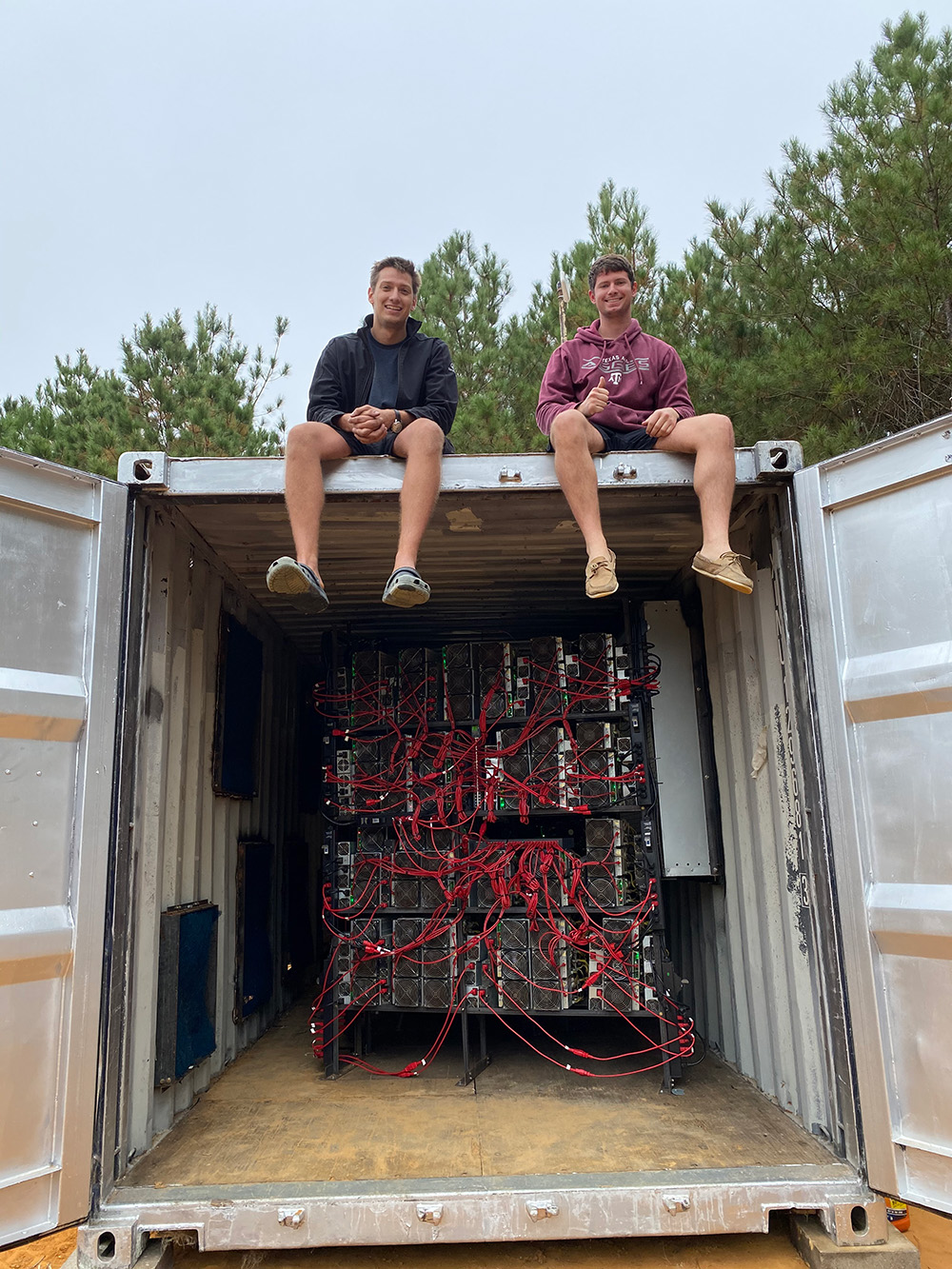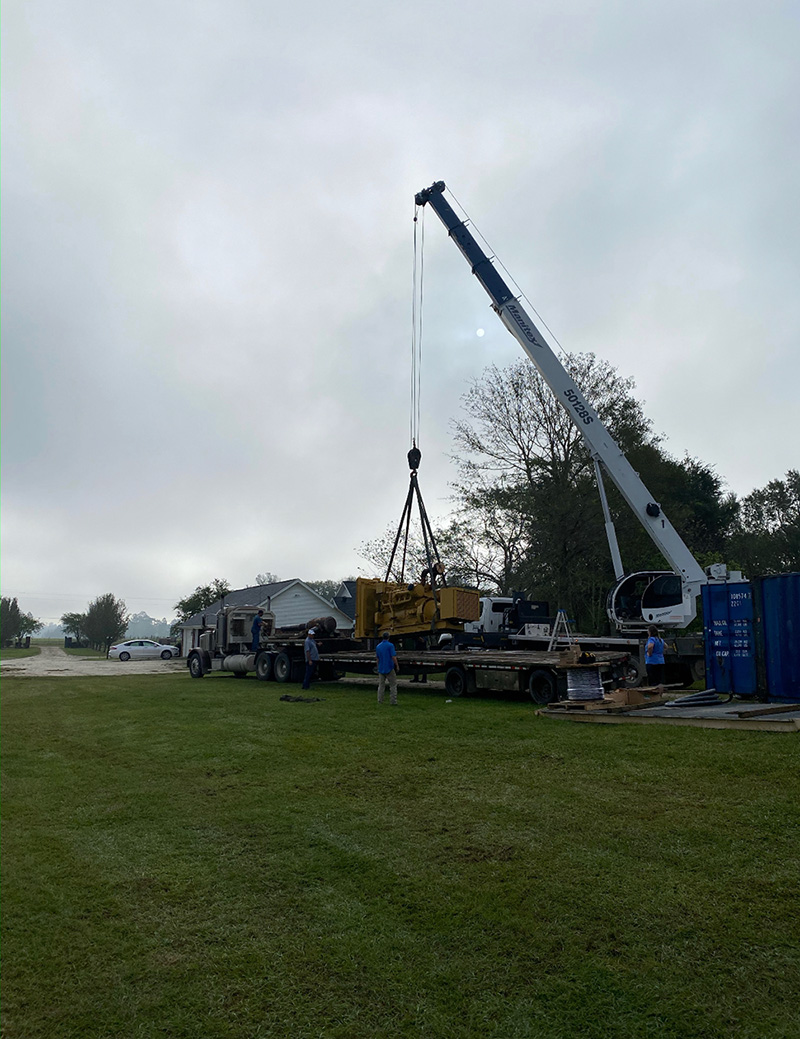
In 2019, Matt Lohstroh ’21, a finance major, and Brent Whitehead ’21, an industrial distribution major, founded Giga, a natural gas Bitcoin mining company headquartered in Beaumont, Texas.
Flared gas is a byproduct of natural gas associated with oil extraction. If natural gas is not used, it is brought into the atmosphere through two-inch piping to be burned off or “flared”. The focal point of the company is using redirected flared gas from oil drilling operations as an alternative to powering Bitcoin mining servers as a solution for the amount of natural gas projected into the atmosphere from oil drilling.
By tapping into the natural gas piping, the unused natural gas gets redirected to a generator to create electricity to power the Bitcoin mining servers.
The servers manufacture data centers up to 40 feet long that are situated in an inoperative shipping container that has been engineered with a custom electrical structure and waterproof infrastructure to withstand harsh conditions that can hit East Texas drilling sites. Electricity then flows through the data center and gets broken down multiple times so it can be individually distributed to hundreds of mining computers.

“Before, people didn’t really have a solution for this flared gas, but now they do. And we want to make sure that our company also allows other people, whether it be oil and gas operators, or other investors and entrepreneurs in the space, the ability to benefit from this opportunity as well,” Whitehead said. “There’s no reason to be flaring gas just because it’s stranded, now there are solutions for it. Bitcoin mining is a solution.”
Their name Giga came as the result of a cross between giga as a unit of power to mean one short-scale billion, and Gig ’Em, where “gig” is highlighted in the logo.
The two found out about a similar operation being done in an area of Canada through Twitter and knew it would be successful in the state of Texas.
“Matt and I, we bootstrapped this from the beginning. We both had lawn care and landscaping businesses in high school, and that’s the money we used to start this business,” Whitehead said. “It was about $50,000, and we put everything together and that was all the money we had. So, we were betting a lot that this was going to work.”
Whitehead’s engineering and oil background and Lohstroh’s finance background and knowledge of Bitcoin make for a complementary match to help spearhead a market composed of two historically distinct industries.
They cited Shelly Brenkman, co-founder of Startup Aggieland, a cross-collaboration initiative of the Center for New Ventures and Entrepreneurship for student entrepreneurs, and Dr. Detlef Hallerman, clinical professor in the Mays Business School, as critical influences on them from getting their business up off the ground all the way to meeting with investors.
The pair both said that their degree programs helped prepare them for the business world and that the value of the Aggie network is unlike any other to further themselves in the business world.

“The truck that the first crane was on broke, so we had to figure out a game plan to pick this thing up after that,” Whitehead said. “I was a little concerned how this was going to go when initially plugging this in, but now I can’t even get this out of my house. But we had another crane come out and pick it up, and we shipped it to its home in East Texas.”
In addition to wastefulness, flaring can be inefficient because of the amount of emissions. And methane, while more short-lived, is considerably more potent than carbon dioxide.
The two echoed that the bitcoin-natural gas combination creates a solution for producers to lessen emissions, as well as giving opportunities for operators and producers for employment that wasn’t a traditional revenue stream before.
Currently, Lohstroh and Whitehead remanufacture their own natural gas generators at their machine facility in Beaumont.
“We’re actually able to manufacture a bitcoin mining data center in about four days. Usually, that process takes about two weeks. We have a 6000-sq ft manufacturing facility with these Bitcoin mining data centers. We’re doing full-scale manufacturing to be able to print 10s of millions of dollars worth of equipment in a matter of weeks,” Lohstroh said. “We’ve got a full-time staff out in Beaumont, Texas, and we’re just out there mining Bitcoin. So, we’re betting on the fact that natural gas Bitcoin mining, both for us and for the market, is going to really break out and have a massive need for that.”